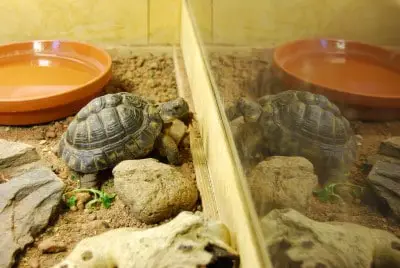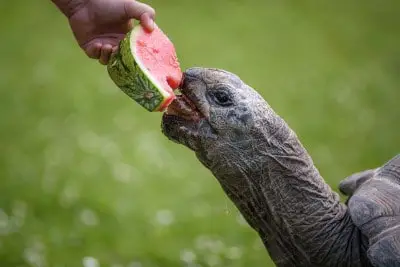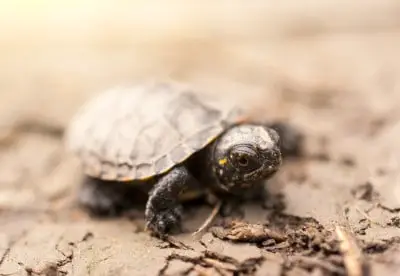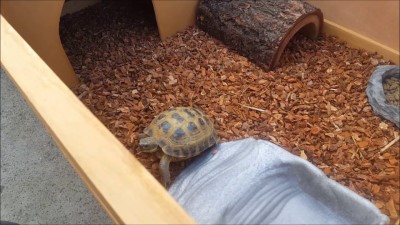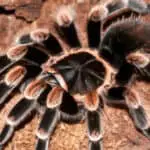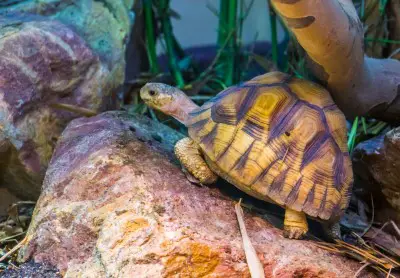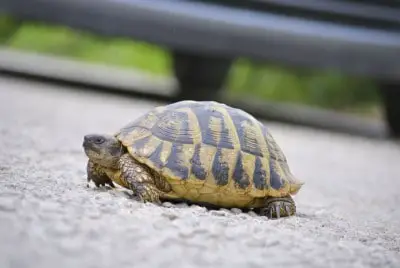Tortoises are fascinating pets and will exhibit certain behavior that can baffle you as the owner. Understanding these behaviors is important to enabling you to care for your pet better. Whether your tortoise is head butting as part of its normal behavior or to alert you about something, we understand it is a concern that requires attention.
Tortoises will headbutt to assert territorial dominance. This behavior is common in male than female tortoises. It is also part of their mating routine; hence, more common during the mating season. Thus, contrary to many interpretations such as aggression and disease, head butting is normal.
If you want to find out why tortoises head butt, this is the ultimate guide for you. We will help you know why tortoises’ head butt objects, why they become aggressive, and whether you can stop your pet from head butting. Read through the rest of the article to find out all the answers you need.

Why Do Tortoises Head Butt Objects?
Headbutting is a common behavior, especially in male tortoises compared to females. Your pet will head butt objects, including your car, shoes, other pets, and people. This is especially if you allow it to move around your home freely.
Headbutting signals sexual maturity in male tortoises. While your pet may go around head butting everything, you do not need to worry about their safety. Usually, you will notice that your pet tucks its head inside its shell before contacting the object or person on closer observation. Given that the tortoise’s shell is meant for protection, your pet will not get hurt during head butting.
Female tortoises, especially those carrying eggs, also called gravid, will also head butt. During this period, these females are usually defensive and protective of their eggs. Therefore, they will head butt on anything or anyone they find a threat.
If you keep your male tortoise alone in their enclosure, they will head butt during the mating season with inanimate objects in their enclosure, as they try looking for something to mate with. They may even mount on some of the objects they head butt due to their urge to mate.
Headbutting can start at any age. Usually, it should start when your pet is sexually mature due to the release of certain hormones. However, this is not a thumb rule, as this behavior could start when some tortoises are as old as 40years. In addition to asserting sexual maturity, head butting is also a way of indicating territorial dominance. This is especially if you house a single tortoise in its enclosure or two males in one enclosure. A bored tortoise will also headbutt, which is why you should landscape a tortoise enclosure by providing plants and hideouts for your tortoise to mount and remain entertained.
If you house more than one tortoise in a single enclosure, there will likely be food competition between your pets. This competition may trigger head butting during feeding times. Also, if your tortoise finds you a threat during feeding, it will head butt you when you feed them or as you place their food in their food dishes.
While tortoises will head butt for the above reasons, you should not mistake this for aggression since headbutting is a normal tortoise behavior. Differentiating between aggression and head butting is necessary to know which measures to take concerning your pet behavior.
Do Tortoises Become Aggressive?
Naturally, tortoises are calm pets. They are also solitary and will prefer staying alone except during the mating season. Therefore, telling whether your tortoise is aggressive and finding out the cause of aggression is easy given their calm nature.
If triggered by factors in their environment, including other tortoises or human beings, tortoises can become aggressive and moody. However, this is a rare incidence, and with proper care, you can reduce this aggression and make your pet happy. However, under good environmental circumstances, your tortoise will never show aggression to you, other pets, or members of your household.
An aggressive tortoise will communicate to its owner using different postures. Headbanging is a common behavior for an aggressive tortoise. Your pet will bang on any object, including the one that triggered its aggression. Other behaviors you expect from an aggressive tortoise include biting and chasing.
Generally, any tortoise species can become aggressive. This aggressiveness will also vary depending on the gender, with males being more aggressive than females. Their territorial dominance usually causes this. Other factors that can make your pet tortoise aggressive include gravid females, hunger, housing, incompatibility, lack of stimulation, and constant disruptions.
Gravid females are usually protective. They will protect their eggs by covering them with soil and flatten the cover with plastron such that it is indistinguishable from the surrounding. During this time, these females also feel threatened, and while protecting their eggs, they will display an aggressive stance. They may also bob their heads, hiss, or even bite if you get closer to their eggs. Whether male or female, a hungry tortoise will be very aggressive. This is why you should ensure that you feed your pet regularly. In their aggression, tortoises may become choosy and eat what they want to, leaving the rest to waste.
When housing your tortoises, you should factor in gender, size, and species compatibility, major causes of aggression in tortoises. For instance, if you keep two males in one enclosure, they will become territorial and aggressive, resulting in fights. Each of the males will butt their heads in aggression and as a sign of territorial dominance.
Housing a male tortoise alone in an enclosure will also spur aggression. As your pet grows older, it will experience hormonal changes due to sexual maturity, and the lack of a female counterpart to mate with will result in aggression. This explains why you will constantly find your pet banging its head. Tortoises will also get bored if housed in a boring enclosure. To prevent this, supply plants and toys to keep them entertained and occupied. While housing your tortoises, ensure you consider the size as the big tortoises may bully the smaller ones.
Finally, you should avoid putting incompatible species in a common enclosure. Some tortoise species are calm, while others are active and aggressive. Keeping such incompatible species together will spur aggression. While it is not always the case, the other tortoises may also pick on the different-looking species and fight them, especially if they are also disadvantaged in size. Thus, to be safe, you should house different species in separate enclosures. While doing this, ensure you and your household members respect your pet’s private space by avoiding constant movement in and out of their space.
How Do You Stop Your Tortoise From Head Butting?
Headbutting is normal behavior, and training your pet out of this behavior may prove challenging. However, if you are worried about this behavior, there are certain things you can do to minimize it.
To minimize headbutting, you should avoid keeping two male tortoises together. This way, you will stop territorial and mate competition between them, making them less likely to head butt. Instead, you can consider housing a male with two or more females. If you only have one female and male, you will need to closely monitor them, as the males get aggressive during mating season and injure females. Thus, if possible, you should house one male with more than one female to give the females a break from mating.
Providing a big enclosure for your pets will also help reduce headbutting. This is because your pet will have enough space to move around. You can also reduce the temperatures in the enclosure around the mating season to ensure pet comfort. Also, provide enough feeding dishes, food, and water for your pets to reduce food competition. While doing this, ensure you always remove any leftovers to prevent bad smells.
Finally, since tortoises do not love too much attention, you should avoid overhandling your pet. Unlike dogs and cats, tortoises are not as sociable and will become frustrated if you constantly handle them. Thus, you should limit your pet’s interactions to when you are feeding them or cleaning their enclosure.
Wrap Up
Headbutting is a normal behavior in tortoise; it acts as a way of expressing dominance. Tortoises will also head-butt around sexual maturity with other tortoises and inanimate objects in their enclosure. Thus, if you notice this behavior, consider it normal rather than mistaking it for aggression or sickness.
While tortoises are pretty calm animals, they can become aggressive if triggered by factors in their environment. This includes human interactions, housing incompatibilities, and aggression around the egg-laying and incubation period in females. If you notice this, you can adjust the conditions to suit your pet requirements.
Finally, since head butting is normal behavior, it may be challenging to stop your pet. However, by housing males separately and putting at least two females in each enclosure, you will minimize head butting. Providing a big enclosure with proper landscaping and enough toys and giving your pets their private space will also minimize this behavior and make your pet happy and comfortable.


